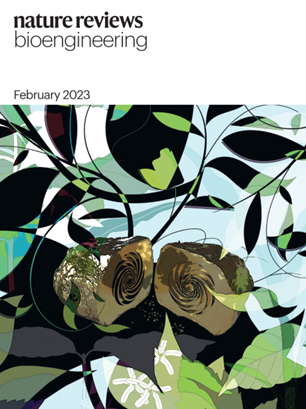From small molecules to entire organisms, evolution has refined biological structures at the nanoscale, microscale and macroscale to be chiral-that is, mirror dissymmetric. Chirality results in biological, chemical and physical properties that can be influenced by circularly polarized electromagnetic fields. Chiral nanoscale materials can be designed that mimic, refine and advance biological chiral geometries, to engineer optical, physical and chemical properties for applications in photonics, sensing, catalysis and biomedicine. In this Review, we discuss the mechanisms underlying chirality transfer in nature and provide design principles for chiral nanomaterials. We highlight how chiral features emerge in inorganic materials during the chemical synthesis of chiral nanostructures, and outline key applications for inorganic chiral nanomaterials, including promising designs for biomedical applications, such as biosensing and immunomodulation. We conclude with an outlook to future opportunities and challenges, including the need for refined characterization techniques.

